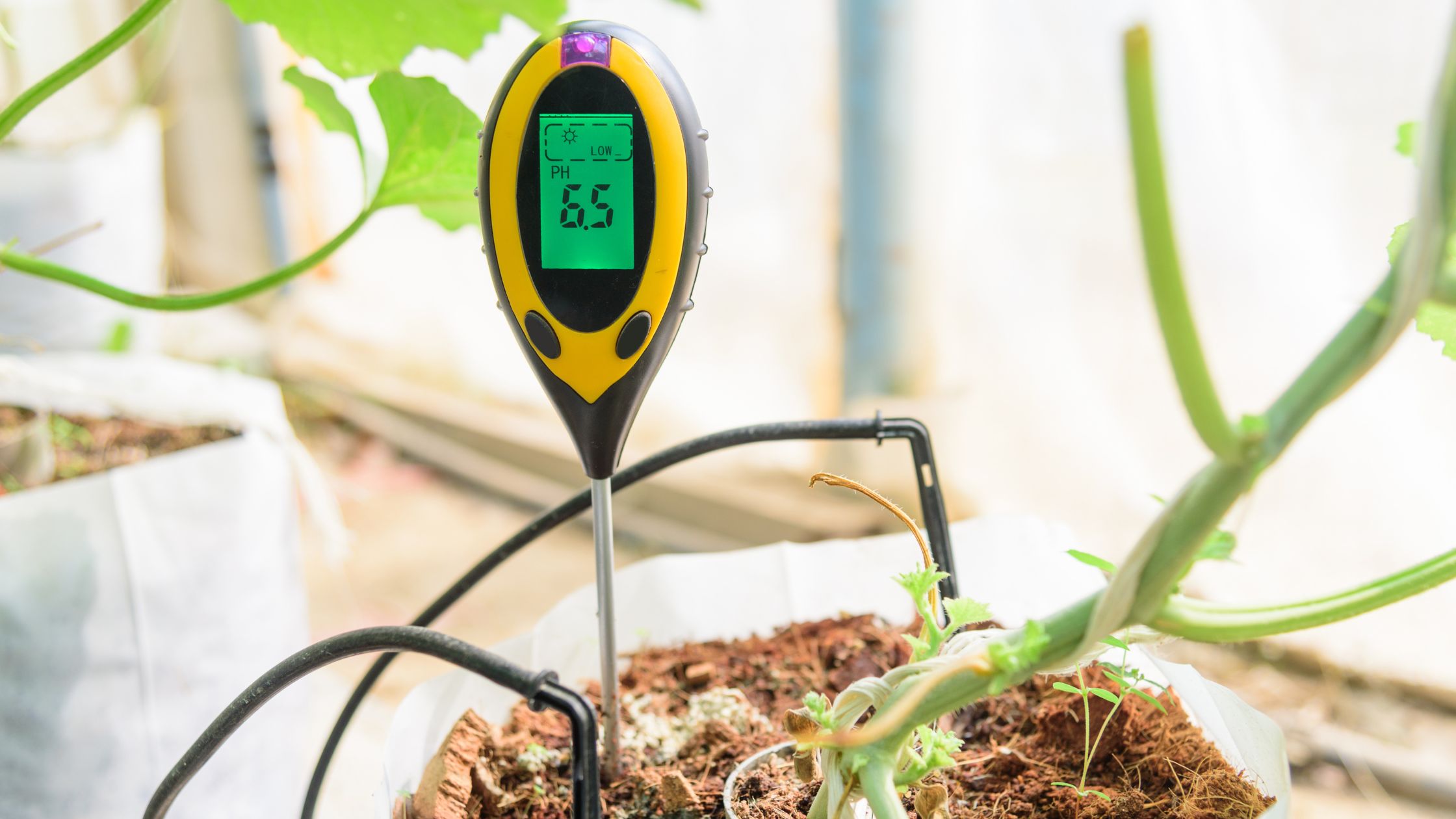In indoor growing, the right nutrient supply is crucial for healthy plants and maximum yields. But even the best fertilizer is useless if the plants cannot absorb the nutrients. This is where the pH and EC values come into play. They influence the availability of nutrients and therefore overall plant growth. In this article, we explain the importance of pH and EC values and show you how to measure and adjust them correctly.
pH value: The acidity of the nutrient solution
The pH value indicates the acidity of a solution. It is measured on a scale from 0 to 14, with 7 being neutral. Values below 7 are acidic, values above 7 are alkaline (basic).
Why is the pH value important?
The pH value influences the solubility of nutrients in the nutrient solution. Each nutrient has an optimum pH range in which it can be best absorbed by the plants. If the pH value is outside this range, the plants cannot absorb the nutrients effectively, even if they are present in sufficient quantities. This can lead to deficiency symptoms and growth problems.
The optimum pH range:
For most plants in indoor growing, the optimum pH value is between 5.5 and 6.5. Most nutrients are readily soluble and available in this range.
Measure pH value:
You can measure the pH value of your nutrient solution with a pH meter or pH test strips. pH meters are more accurate, but also more expensive. pH test strips are an inexpensive alternative, but only provide a rough estimate.
Adjust pH value:
If the pH value is outside the optimum range, you must correct it.
- Lowering the pH value: To lower the pH value (make it more acidic), you can use special pH down solutions, which usually contain phosphoric acid or nitric acid.
- Increase the pH value: To increase the pH value (make it more alkaline), you can use pH-up solutions, which usually contain potassium hydroxide.
Important: Always add the pH down or pH up solution drop by drop to the nutrient solution and measure the pH value again after each addition. Changing the pH value too quickly and too much can stress the plants.
EC value: The nutrient concentration
The EC value (electrical conductivity) measures the electrical conductivity of a solution. It provides information about the concentration of dissolved salts in the nutrient solution, which mainly consist of nutrients.
Why is the EC value important?
The EC value tells you how many nutrients are contained in your nutrient solution. Too low a nutrient concentration can lead to deficiency symptoms, too high a concentration can damage the plants and cause “burns” to the roots.
The optimum EC value:
The optimum EC value varies depending on the plant species and growth phase. Young plants and seedlings generally require a lower nutrient concentration than adult plants in the flowering phase. It is important to follow the fertilizer manufacturer’s recommendations and to check the EC value regularly.
Measure EC value:
You can measure the EC value with an EC meter. There are various types of EC meters, which differ in terms of accuracy and price.
Set EC value:
- Lowering the EC value: To lower the EC value, you can dilute the nutrient solution with water.
- Increase the EC value: To increase the EC value, you can add more fertilizer to the nutrient solution.
Important: Change the EC value gradually and measure it regularly to ensure that it remains in the optimum range.
pH and EC value in the course of cultivation
The pH and EC values should be checked and adjusted regularly throughout the cultivation period.
- Growth phase: In the growth phase, the plants require a lower nutrient concentration (lower EC value). The pH value should be in the optimum range between 5.5 and 6.5.
- Flowering phase: During the flowering phase, the plants’ nutrient requirements increase (higher EC value). The pH value should continue to be kept in the optimum range.
- Rinsing: In the last few weeks before harvesting, the nutrient solution is rinsed with clear water to remove excess nutrients from the substrate. This reduces the EC value and improves the taste of the harvest.
Further tips
- Water quality: The quality of the water used has an influence on the pH and EC values. If possible, use soft water with a low mineral content.
- Temperature: The temperature of the nutrient solution influences the nutrient uptake of the plants. The optimum temperature is between 18 and 22 °C.
- Oxygen content: A sufficient oxygen content in the nutrient solution is important for root health. Use an air pump or another method to enrich the nutrient solution with oxygen.
- Substrate: The substrate used can also have an influence on the pH and EC values. Find out about the properties of the substrate you are using and adjust the nutrient solution accordingly.
- Documentation: Keep a record of the pH and EC values to track changes over the course of cultivation and optimize your cultivation methods.
Conclusion
Checking the pH and EC values is an important part of indoor growing. By measuring and adjusting these parameters correctly, you can ensure that your plants are optimally supplied with nutrients and grow healthily. Pay attention to the individual needs of your plants and adjust the nutrient solution accordingly.
From 50€ purchase value
Get a 5€ discount!
Sign up for our newsletter and save on your next purchase!

